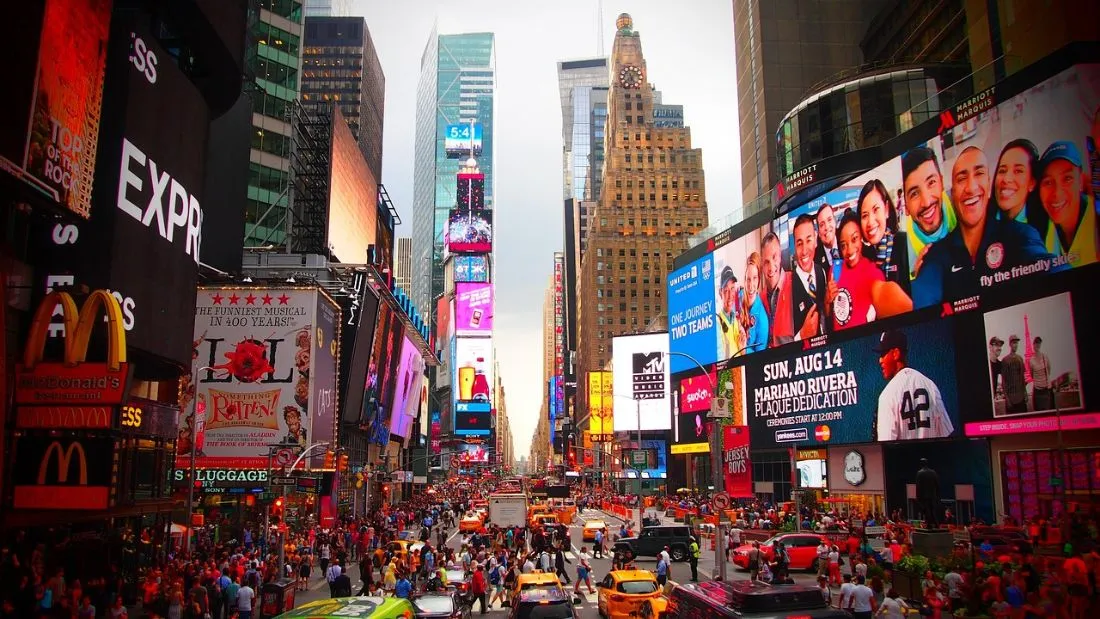The more, the merrier? Why 8 billion people is not a problem (on a plant-based diet)

Is the future green or Soylent Green?
One of the earliest modern pieces of ecological dystopian fiction, the 1973 sci-fi thriller Soylent Green, is set in the year 2022 (which might sound familiar!) amidst the crises of global warming, pollution and overpopulation. Poverty and starvation are rampant, crime skyrockets and the evil corporation Soylent has a monopoly on all science, technology and industry.
This picture of today, painted just 50 years ago, is a terrifying one; for all that is bad in the world, we may thank our lucky stars that it has not (yet) come to pass. But with last week’s announcement that the global human population has reached 8 billion, anxiety levels have risen, and many questions have been asked about the future.
At this rate, won’t we run out of food? Clean water? Land? Houses? Energy? At each milestone we reach in this burgeoning population of ours, the same concerns resurface, and it is now abundantly clear that something has to give. The question is… what can we do?
Thankfully, the answer is right under our noses: plants!

Farm plants, not animals, to feed the world
We already produce enough nutritious, human-edible, plant-based food to feed a global population of 10 billion (or more!). How is it, then, that 10% of humans across the planet simply don’t have enough food day-to-day, and over 3 billion cannot afford to eat a nutritious diet?
Simple: because we are also unnecessarily feeding and fattening up 70 billion land animals at any given time for the consumption of just a privileged few. As Viva!’s latest Eating the Earth campaign shows, 83% of agricultural land around the world is dedicated to animal agriculture, either for grazing or growing crops to support livestock. By 2050, this already monumental proportion of land use needs to increase by a further 70% in order for meat production to keep up with the current population trajectory. And yet these animals – cows, pigs and chickens, for instance – convert just a tiny fraction of the energy and nutrients from the crops and fresh water they ingest into meat, dairy and eggs.
The crippling inefficiency of growing plants to feed to animals to feed to humans (rather than just growing plants to feed directly to humans) is far, far more threatening than “overpopulation”. Yet it is nothing more than a uniquely cruel, stubborn and destructive business model that we can choose to boycott, simply by going vegan.
You see, overpopulation-induced famine wouldn’t be an issue at all if we just opted for a vegan diet.
According to the latest research, if we were to switch to a plant-based food system, we could produce the same amount of food – enough for 10 billion people – on just a quarter of the land we currently use. Whether animals are grass-fed or intensively factory farmed, the amount of land needed to produce enough food to feed them all is preposterous.
Poore and Nemecek (2018) estimate that almost 120m² of land is required for 1000 calories of cow and sheep flesh, yet this drops to just over 2m² for 1000kcal of peas (a fantastic protein source!) and 0.9m² for 1000kcal of root vegetables.

A state of nature
Of course, we advocates for veganic agriculture are faced with the objection that not all land is suitable for farming crops – and this is perfectly true. But that’s just the point: we don’t need to use all the land available to us for farming crops! We can get by on just a fraction of the land we currently use to feed the world’s population, and the rest can be used for other purposes – or, better yet, can be rewilded and turned back into natural carbon sinks like forests and nature reserves.
Look at the Peak District in the UK, for example. Vast swathes of undulating land are used for grazing cattle and sheep, since the land is typically too uneven for growing fields of wheat. We forget, however, that the entirety of the UK was once unbroken forest, including the Peaks. Deforestation over the last 5000 years of settlement has slowly destroyed all the carbon sinks we once had and turned the land into pasture for farmed animals. Nowadays, by adopting a plant-based diet, we have the opportunity to turn it back into what it once was – to rewild and revitalise the land into something genuinely beautiful, no longer a shadow of its former, long-forgotten self.
We are right to be worried about using up all our resources. However, overpopulation is not the culprit. Not alone, anyway. It is the expansion of animal agriculture and the increasing reliance of the world’s population on extremely resource-intensive ways of eating that should be most directly in the spotlight.
If we were to simply stop eating animals and animal products, we would reduce our emissions significantly (as it stands, even if we were to ditch oil and gas tomorrow, emissions from animal agriculture would still push us over 1.5 degrees of global warming, the agreed limit to mitigate the worst impacts of the climate crisis), free up 3 billion hectares of land, feed more people and harm fewer animals.
What’s not to like?
Join the movement. Help solve the population crisis. Go vegan.




